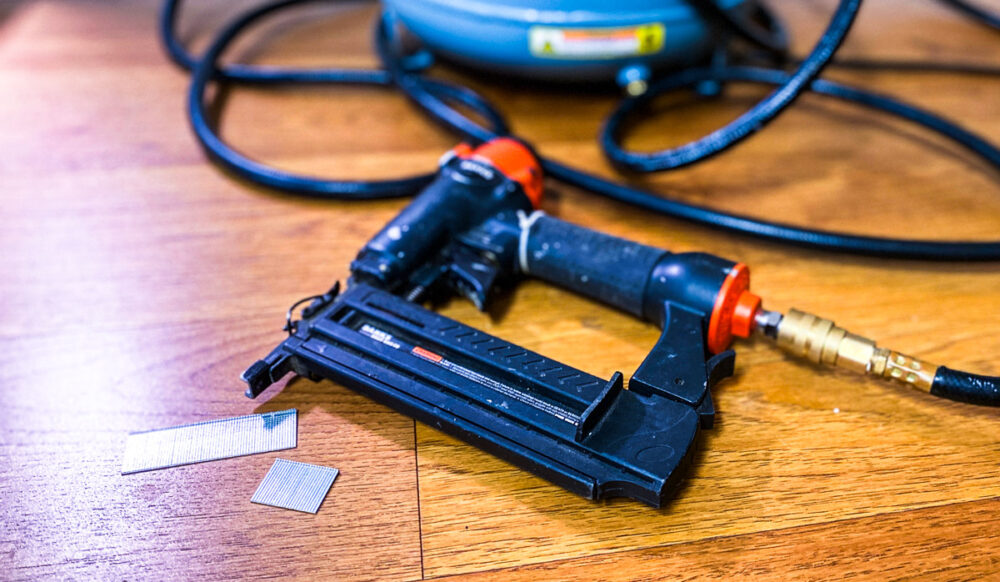When working on woodworking and trim projects, choosing the right nailer can make all the difference. Two of the most commonly used nail guns are the brad nailer and the finish nailer. While they may look similar, they serve different purposes. So, which one is best for your project? Let’s compare!

What is a Brad Nailer?
A brad nailer is a lightweight nail gun designed to drive 18-gauge brad nails into wood. These nails are thin and have small heads, making them perfect for delicate trim work and light-duty tasks.
Pros:
- Leaves small, nearly invisible holes – Minimal need for wood putty
- Great for thin and delicate wood pieces – Less risk of splitting
- Ideal for trim, paneling, and crafts
- Smaller nails allow for easy removal if needed
Cons:
- Not strong enough for heavy-duty applications
- Not ideal for thick, hardwood materials
- Doesn’t provide strong holding power
Best For:
- Attaching thin trim, molding, and baseboards
- Craft projects and paneling
- Furniture repair and light carpentry work
What is a Finish Nailer?
A finish nailer is a more powerful nail gun designed to drive 15- or 16-gauge nails into wood. These nails are thicker and have a larger head, providing better holding power for heavy-duty trim and carpentry work.
Pros:
- Stronger hold for larger, heavier trim pieces
- Works well with hardwood and dense materials
- Ideal for baseboards, crown molding, and cabinetry
- Creates a more permanent, durable bond
Cons:
- Larger nail holes require wood putty for a clean finish
- More likely to split delicate wood
- Harder to remove nails if mistakes happen
Best For:
- Installing baseboards, door and window trim
- Cabinetry, chair rails, and crown molding
- Heavy-duty woodworking and furniture making
Key Differences Between a Brad Nailer and a Finish Nailer
| Feature | Brad Nailer | Finish Nailer |
|---|---|---|
| Nail Size | 18-gauge (thin) | 15- or 16-gauge (thicker) |
| Strength | Light-duty | Heavy-duty |
| Hole Size | Small, barely noticeable | Larger, requires filling |
| Wood Splitting | Less likely | More likely on delicate wood |
| Best For | Delicate trim, crafts, light carpentry | Baseboards, crown molding, cabinetry |
Which One Should You Choose?
Choose a Brad Nailer If:
- You’re working with thin, delicate trim.
- You want a clean finish with minimal holes.
- You need an easy-to-remove fastening option.
Choose a Finish Nailer If:
- You need stronger holding power for heavy-duty trim.
- You’re working with thicker wood or hardwood materials.
- You want a more permanent, professional finish.
Both brad nailers and finish nailers have their place in woodworking. If you’re working on light trim and precision projects, go for a brad nailer. But if you need a stronger hold for larger trim and furniture work, a finish nailer is the better choice.
Having both tools in your kit ensures you’re prepared for any project, whether it’s fine detailing or heavy-duty trim work!
Leave a Reply